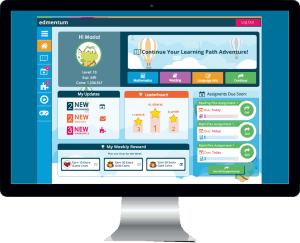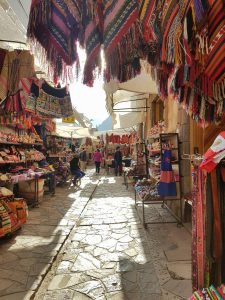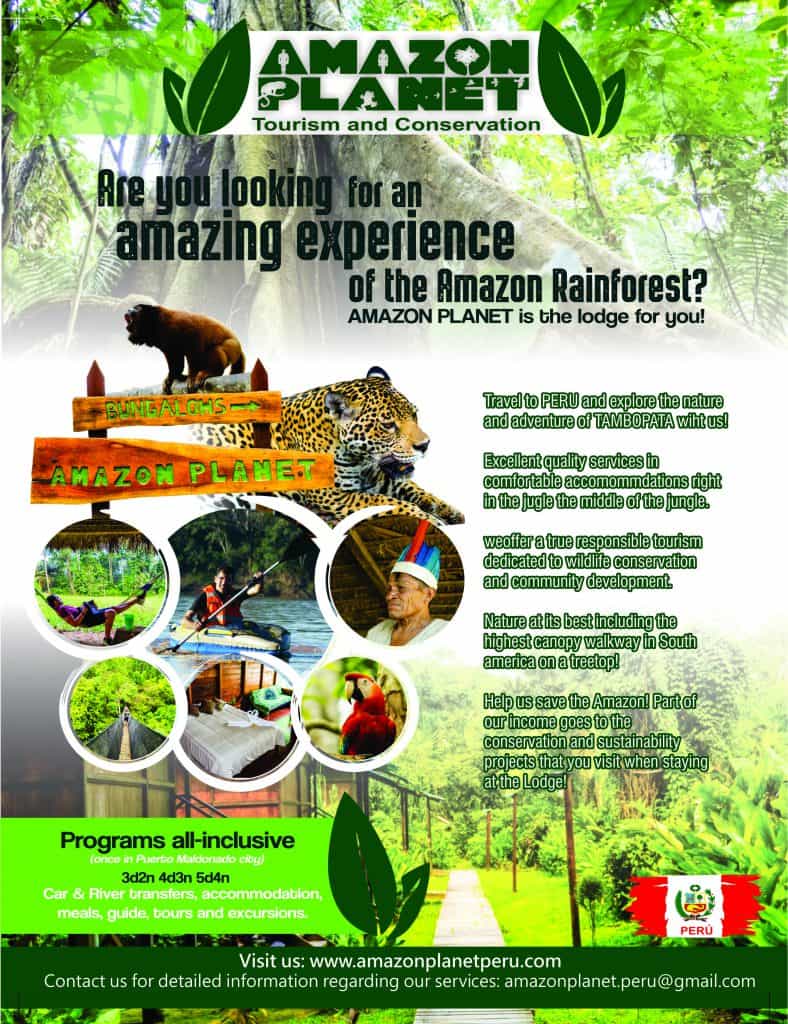 |
 In 1992, Liliya Stefoglo came to America from Moldova and found work as a paraprofessional in Federal Way Public Schools in Washington State. As a speaker of English, Russian, and Ukrainian, three of the district’s top five languages, Stefoglo was a critical resource in a classroom with many young dual-language learners (DLLs), the linguistic conduit between her students, the teacher, and students’ families.
In 1992, Liliya Stefoglo came to America from Moldova and found work as a paraprofessional in Federal Way Public Schools in Washington State. As a speaker of English, Russian, and Ukrainian, three of the district’s top five languages, Stefoglo was a critical resource in a classroom with many young dual-language learners (DLLs), the linguistic conduit between her students, the teacher, and students’ families.
While Stefoglo was happy to use her language skills in her new job, like many paraprofessionals, she faced low and stagnant wages and had the desire to advance in her career. Over time, she developed strong instructional competencies by facilitating small-group instruction and supporting student learning. But despite her potential to lead rather than assist instruction, Stefoglo remained a paraprofessional for ten years, lacking guidance from her district, supervisor, and colleagues.
When a new principal arrived and took notice of Stefoglo’s instructional expertise, she learned how to advance her career. He encouraged her to become a teacher, a process she knew nothing about. He asked about her credentials. To his surprise, Stefoglo had both a bachelor’s and a master’s degree from her home country, the latter in linguistics and education. She had studied to become a teacher in Moldova.
But the process for applying to teach in the U.S. was laborious. Stefoglo first needed to get her credentials recognized by Washington State and then take multiple exams to become certified and licensed to teach. Her assistant principal connected her to a member of the state’s teacher certification office, who explained the financial implications of each step in the application process, from credential evaluation to test registration and administrative processing fees. Some of Stefoglo’s peers scoffed at her pursuit of a teaching credential. One said, “There are other opportunities for people like you. You can’t be a teacher in America with such a heavy accent.”
She proved them wrong. One year and $5,000 later, after cutting through much red tape, Stefoglo became a lead teacher—and a great one, prized by her students, school, and community. She went on to receive National Board Certification, a distinction that involves a rigorous, competency-based application process. Later, she became a director of English as a second language (ESL) services for another Washington school district.
While Stefoglo’s circumstance is common, her advancement story is unusual.
Paraprofessionals are twice as likely to speak a language other than English at home than their teacher counterparts, and many bring instructional knowledge and clear, accessible pathways for gaining teacher certification in the U.S. but often face many hurdles along the way. Multilingual paraprofessionals represent a largely untapped pool of potential teacher talent—largely because policies have made it difficult for them to advance to lead teacher.
Some research already exists on multilingual paraprofessionals and the barriers that they encounter when applying to teach.
Last June, we released a brief, “Multilingual Paraprofessionals: An Untapped Resource for Supporting American Pluralism,” that identifies hurdles—bureaucratic, financial, and linguistic—that paraprofessionals face on the pathway to teaching, summarizes existing research on each, and begins to explore solutions.
This report, based on conversations from focus groups with dozens of paraprofessionals across five cities, illustrates these hurdles from the paraprofessionals’ perspective. Our work here amplifies paraprofessionals’ voices and their concerns in order to inform policy solutions grounded in community and stakeholder input.
To be sure, not all paraprofessionals desire to teach like Stefoglo: many are content in their current positions. And not all should become lead teachers. But according to a recent survey conducted by the National Education Association, about half of paraprofessionals do have the desire to step to skills to bear in classrooms with DLLs and other diverse learners. But most paraprofessionals lack the front of the classroom.6 What is more, there is evidence that paraprofessionals can have a positive influence on student outcomes—particularly minority-student outcomes.
A recent study conducted by Charles Clotfelter, Steven Hemelt, and Helen Ladd in North Carolina found that paraprofessionals had a positive effect on students’ test scores in reading and minority students’ test scores in math. And their impact was larger for minority students than for white students in both subjects and went beyond academic outcomes; they also helped to reduce rates of absenteeism.
These potential teachers are valuable assets in our nation’s increasingly diverse school system. Dual-language learners are a growing population and represent 10% of total public school enrollment in the U.S.
Research suggests that DLLs do best in schools that help them access rigorous academic content and learn English by continuing their development in their home languages. Bilingual education programs—including popular dual-immersion models—establish strong academic foundations and help DLLs develop full academic proficiency in English and in their home languages.
Of course, multilingual instructional approaches are only viable for schools that have multilingual teachers on staff (see sidebar: “Why Multilingual Paraprofessionals Matter for DLLs” on page 8). Ongoing, steady increases in the number of DLLs enrolled in American schools mean that multilingual teachers are currently in high demand.12 Indeed, 32 states and the District of Columbia report shortages of bilingual, dual-immersion, and ESL teachers.
Moreover, most states and urban districts report a significant teacher diversity gap.14 In fact, students of color make up a majority of the nation’s student population, while the teaching population is 82% white.
Since the paraprofessional workforce more closely reflects the diversity of the U.S. population on a variety of measures (see Figure 1), supporting its career advancement could help states and districts narrow this gap and increase the racial, ethnic, and linguistic diversity of their teaching force.
As the diversity of America’s student population grows, it is critical that policymakers pave pathways for promising paraprofessionals to enter teaching and mitigate key barriers along their way. In turn, this could increase the diversity of the mostly white, monolingual teacher workforce and help ensure that America’s future teachers can best meet the needs of DLLs and other diverse learners.
This article is excerpted under a Creative Commons license from Teacher Talent Untapped, a report by New America. The full report is available at www.newamerica.org/education-policy/policy-papers/teacher-talent-untapped/.
Kaylan Connally was a policy analyst at New America. Amaya Garcia is a senior researcher in the Education Policy program at New America. Shayna Cook is a policy analyst with the Education Policy program at New America. Conor P. Williams is the founding director of the Dual Language Learners National Work Group at New America. His work addresses policies and practices related to educational equity, dual-language learners, immigration, and school choice.
This article is excerpted under a Creative Commons license from Teacher Talent Untapped, a report by New America. The full report is available at www.newamerica.org/education-policy/policy-papers/teacher-talent-untapped/.
References
1. “Professional Licensing and Certification in the U.S.”, World Education Services web page, http://www.wes.org/info/licensing.asp.
2. Michael Sapiro, “What Is the Difference between a Teaching License and Teaching Certification?” Concordia Online Blog, Concordia University (September 3, 2015), https://online.cuw.edu/blog/what-is-the-difference-between-a-teaching-license-and-a-teaching-certification/.
3. Conor P. Williams, Amaya Garcia, Kaylan Connally, Shayna Cook, and Kim Dancy, “Multilingual Paraprofessionals: An Untapped Resource for Supporting American Pluralism” (Washington, DC: New America, June 2016), https://na-production.s3.amazonaws.com/documents/DLLWH_ParasBrief6.1.
4. Jorge P. Osterling and Keith Buchanan, “Tapping a Valuable Source for Prospective ESOL Teachers: Northern Virginia’s Bilingual Paraeducators Career-Ladder School-University Partnership,” Bilingual Research Journal 27, no. 3 (2003): 503–521; Michael Genzuk and Reynaldo Baca, “The Paraeducator-to-Teacher Pipeline: A 5-Year Retrospective on an Innovative Teacher Preparation Program for Latina(os),” Education and Urban Society (November 1998): 73–88; Christine L. Smith, “Focus on an Untapped Classroom Resource: Helping Paraprofessionals Become Teachers” (Atlanta, GA: Southern Regional Education Board, April 2003), http://files.eric.ed.gov/fulltext/ED477170.pdf; Jorgelina Abbate-Vaughn and Patricia C. Paugh, “The Paraprofessional-to-Teacher Pipeline: Barriers and Accomplishments,” Journal of Developmental Education 33, no.1 (2009): 14–27, http://files.eric.ed.gov/fulltext/EJ887836.pdf; Williams et al., “Multilingual Paraprofessionals”; Patricia J. Bonner, Maria A. Pacino, and Beverly Hardcastle Stanford, “Transition from Paraprofessionals to Bilingual Teachers: Latino Voices and Experiences in Education,” Journal of Hispanic Higher Education 10, no. 3 (2011): 212–225; Ellen M. Rintell and Michelle Pierce, “Becoming Maestra: Latina Paraprofessionals as Teacher Candidates in Bilingual Education,” Journal of Hispanic Higher Education 2, no. 1 (2003): 5–14, http://citeseerx.ist.psu.edu/viewdoc/download?doi=10.1.1.949.1148&rep=rep1&type=pdf; Kerri J. Wenger, Tawnya Lubbes, Martha Lazo, Isabel Azcarraga, Suzan Sharp, and Gisela Ernst-Slavit, “Hidden Teachers, Invisible Students: Lessons Learned from Exemplary Bilingual Paraprofessionals in Secondary Schools,” Teacher Education Quarterly 31, no. 2 (2004): 89–111, http://files.eric.ed.gov/fulltext/EJ795248.pdf.
5. Williams et al., “Multilingual Paraprofessionals.”
6. National Education Association, “Getting Educated: Paraeducators,” http://www.nea.org/home/18605.htm.
7. Laura Goe and Lauren Matlach, “Supercharging Student Success: Policy Levers for Helping Paraprofessionals Have a Positive Influence in the Classroom” (Washington, DC: Center on Great Teachers and Leaders, American Institutes for Research, September 2014), http://www.gtlcenter.org/sites/default/files/Snapshot_Paraprofessional.pdf.
8. Charles T. Clotfelter, Steven W. Hemelt, and Helen F. Ladd, Teaching Assistants and Nonteaching Staff: Do They Improve Student Outcomes? CALDER working paper 169 (Washington, DC: National Center for Analysis of Longitudinal Data in Education Research, October 2016), http://www.caldercenter.org/sites/default/files/WP%20169.pdf.
9. Ibid.
10. “Table 204.27,” Digest of Education Statistics 2015 (Washington, DC: National Center for Education Statistics, 2016), http://nces.ed.gov/pubs2016/2016014.pdf.
11. Rachel A. Valentino and Sean F. Reardon, “Effectiveness of Four Instructional Programs Designed to Serve English Language Learners: Variation by Ethnicity and Initial English Proficiency,” Educational Evaluation and Policy Analysis 37 (April 2015): 612–637; “Study of Dual-Language Immersion in the Portland Public Schools: Year 4 Briefing” (Washington, DC: American Councils for International Education, November 2015), https://res.cloudinary.com/bdy4ger4/image/upload/v1446848442/DLI_Year_4_Summary_Nov2015v3_1_jwny3e.pdf; Ilana M. Umansky and Sean F. Reardon, “Reclassification Patterns among Latino English Learner Students in Bilingual, Dual Immersion, and English Immersion Classrooms,” American Educational Research Journal 51, no. 5 (October 2014): 879–912.
12. U.S. Department of Education, Teacher Shortage Areas Nationwide Listing 1990–1991 through 2016–2017 (Washington, DC: Office of Postsecondary Education, 2016), https://www2.ed.gov/about/offices/list/ope/ pol/tsa.html; Gabriela Uro and Alejandra Barrio, English Language Learners in America’s Great City Schools (Washington, DC: Council of the Great City Schools, 2013), 10, http://files.eric.ed.gov/fulltext/ED543305.pdf.
13. U.S. Department of Education, Teacher Shortage Areas Nationwide.
14. The State of Teacher Diversity in American Education (Washington, DC: Albert Shanker Institute, September 2015), http://www.shankerinstitute.org/sites/shanker/files/The%20State%20of%20Teacher%20Diversity_0.pdf; The State of Racial Diversity in the Educator Workforce (Washington, DC: U.S. Department of Education, July 2016), http://www2.ed.gov/rschstat/eval/highered/racial-diversity/state-racial-diversity-workforce.pdf.
15. Hannah Putman, Michael Hansen, Kate Walsh, and Diana Quintero, “High Hopes and Harsh Realities: The Real Challenges to Building a Diverse Workforce” (Washington, DC: Brookings Institution, August 2016), https://www.brookings.edu/wp-content/uploads/2016/08/browncenter_20160818_teacherdiversityreportpr_hansen.pdf.
16. Kaylan Connally and Kim Dancy, “Paraprofessionals Could Help Solve Bilingual Teacher Shortages,” EdCentral (blog), New America, April 26, 2016, https://www.newamerica.org/education-policy/edcentral/bilingual-teacher-shortages/; Kaylan Connally and Melissa Tooley, “What Is the Future of Teacher Diversity in U.S. Schools?” New America Weekly, New America, October 1, 2015, https://www.newamerica.org/weekly/94/what-is-the-future-of-teacher-diversity-in-us-schools/.

 It is sometimes a challenge for teachers to determine an English language learner’s (ELL’s) skill level. Edmentum—an education technology company based in Minneapolis—supports the diverse needs of ELLs through a flexible approach to learning.
It is sometimes a challenge for teachers to determine an English language learner’s (ELL’s) skill level. Edmentum—an education technology company based in Minneapolis—supports the diverse needs of ELLs through a flexible approach to learning.

 In 1992, Liliya Stefoglo came to America from Moldova and found work as a paraprofessional in Federal Way Public Schools in Washington State. As a speaker of English, Russian, and Ukrainian, three of the district’s top five languages, Stefoglo was a critical resource in a classroom with many young dual-language learners (DLLs), the linguistic conduit between her students, the teacher, and students’ families.
In 1992, Liliya Stefoglo came to America from Moldova and found work as a paraprofessional in Federal Way Public Schools in Washington State. As a speaker of English, Russian, and Ukrainian, three of the district’s top five languages, Stefoglo was a critical resource in a classroom with many young dual-language learners (DLLs), the linguistic conduit between her students, the teacher, and students’ families.
 The SPAIN WORKSHOP is a great opportunity for accredited US higher learning institutions to learn more about the educational opportunities that Spain offers, as well as having a first-hand experience for those who are considering Spain as a destination for their study abroad programs.
The SPAIN WORKSHOP is a great opportunity for accredited US higher learning institutions to learn more about the educational opportunities that Spain offers, as well as having a first-hand experience for those who are considering Spain as a destination for their study abroad programs. Readers in Los Angeles have the opportunity to experience an eye opening cultural experience through dance and storytelling. Attendees can live the Spanish language through the language of Flamenco dance.
Readers in Los Angeles have the opportunity to experience an eye opening cultural experience through dance and storytelling. Attendees can live the Spanish language through the language of Flamenco dance.
 Leanna Robinson climbs to Cusco, Peru to learn Spanish with altitude
Leanna Robinson climbs to Cusco, Peru to learn Spanish with altitude A Day in the Life
A Day in the Life


 Vista Higher Learning’s Norah Lulich Jones explains how their new Senderos program gets students speaking in class
Vista Higher Learning’s Norah Lulich Jones explains how their new Senderos program gets students speaking in class Learning languages is a promise of peace, innovation, and creativity and will contribute to the achievement of global development goals, the head of the United Nations agency for culture and education said last month to mark International Mother Language Day.
Learning languages is a promise of peace, innovation, and creativity and will contribute to the achievement of global development goals, the head of the United Nations agency for culture and education said last month to mark International Mother Language Day.
 Ana Albir describes the development of a digital tool to help English learners in both mainstream and ESL classes
Ana Albir describes the development of a digital tool to help English learners in both mainstream and ESL classes